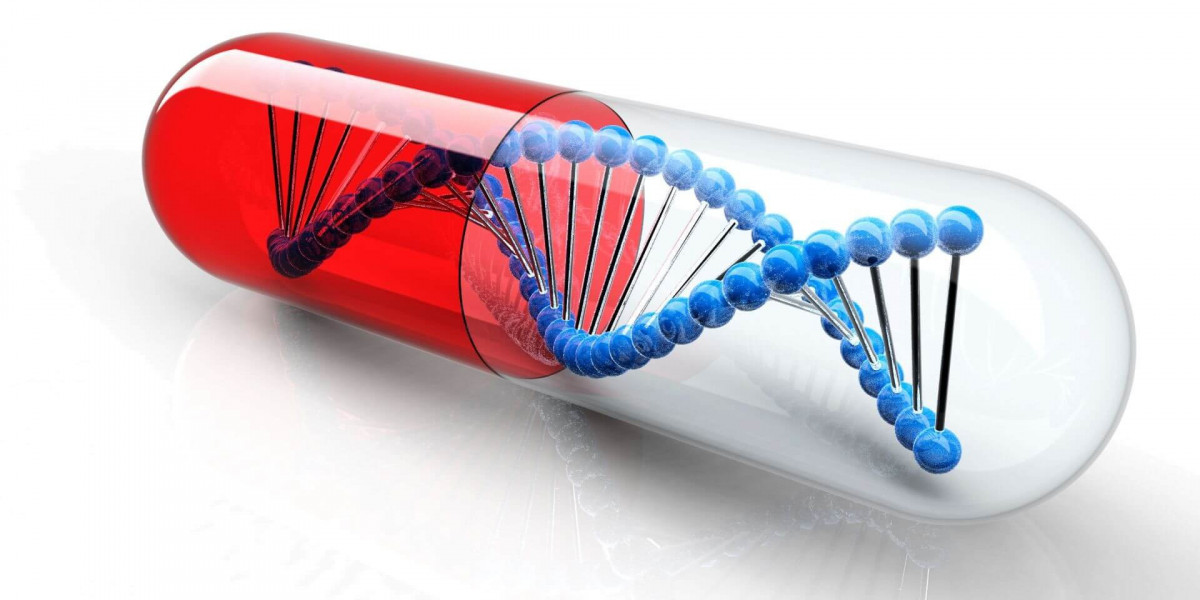Introduction
Gene therapy represents a new era in medicine, offering the potential to treat or even cure genetic disorders by modifying a patient's DNA. While the promise of gene therapy is undeniable, the pathway to widespread adoption is not without its challenges. Among the most significant hurdles are those related to manufacturing and scalability. Gene therapies often involve complex and customized treatments that require highly specialized production processes, posing considerable challenges for scaling these treatments to meet global demand. This article explores the key manufacturing challenges in gene therapy market and the efforts being made to overcome these obstacles.
Complexities of Gene Therapy Manufacturing
1. Personalized Nature of Gene Therapies
One of the primary challenges in gene therapy manufacturing is the personalized nature of many of these treatments. For certain gene therapies, such as CAR-T (Chimeric Antigen Receptor T-cell) therapies, the process involves collecting cells from individual patients, modifying them, and then reintroducing them into the patient’s body. This level of customization is necessary to ensure the therapy is tailored to each patient's unique genetic makeup, but it complicates the manufacturing process.
Each batch of CAR-T cells, for example, requires meticulous quality control to ensure that the genetic modification is accurate and effective. This means that each patient's therapy is effectively a one-off product, which makes scaling production difficult and time-consuming. Additionally, this personalized approach raises concerns about the costs associated with manufacturing, as each patient-specific therapy is produced separately.
2. Viral Vectors and Their Production
Gene therapies often rely on viral vectors to deliver the therapeutic genes into patient cells. These vectors are typically derived from modified viruses, which are engineered to safely deliver the gene therapy without causing disease. While viral vectors are a critical component in gene therapy, their production presents a major challenge.
The production of viral vectors requires high precision, as even minor variations in the manufacturing process can affect the efficacy and safety of the therapy. Moreover, the production process is resource-intensive, requiring specialized facilities, skilled personnel, and significant investment. As demand for gene therapies increases, the need for scalable and reliable viral vector production becomes more pressing. Furthermore, the limited supply of these viral vectors has been a bottleneck in meeting the growing demand for gene therapies, leading to long wait times for patients.
3. Cell Processing and Expansion
For certain gene therapies, particularly those involving cell-based treatments like CAR-T, cells must be harvested from patients, genetically modified, and expanded in large quantities before being infused back into the patient. The cell processing and expansion steps are time-sensitive and require careful monitoring of cell viability, purity, and genetic integrity throughout the process.
This step presents significant scalability challenges, as it requires specialized equipment and facilities to handle large volumes of cells. Additionally, ensuring the consistency of cell modifications across different patient samples and maintaining product quality is a critical concern.
4. Regulatory Requirements and Compliance
Gene therapies face rigorous regulatory requirements imposed by agencies such as the FDA and the European Medicines Agency (EMA). These agencies ensure that gene therapies are safe, effective, and meet the necessary standards for patient use. However, the complex and highly customized nature of gene therapy treatments means that regulatory processes can be more complicated and prolonged than for traditional pharmaceuticals.
Manufacturers must ensure compliance with Good Manufacturing Practices (GMP) and meet stringent requirements for quality control, product testing, and traceability. Navigating the regulatory landscape for gene therapy requires significant expertise and resources, and failure to comply with regulations can delay production and approval processes, further complicating scalability.
Efforts to Overcome Manufacturing Challenges
1. Advancements in Automated and Scalable Technologies
To address manufacturing challenges, several companies and researchers are developing automated systems to streamline gene therapy production. Automation can reduce human error, improve consistency, and speed up the production process. In particular, innovations in automated cell processing and gene editing technologies can help scale production while ensuring quality control.
Some companies are also exploring the use of bioreactors for expanding genetically modified cells in larger volumes. These systems can improve the efficiency of cell expansion, making the process more scalable and reducing costs.
2. Developing Non-Viral Delivery Methods
While viral vectors have proven effective for gene delivery, their production limitations are driving researchers to explore non-viral delivery methods. Technologies such as lipid nanoparticles and polymer-based delivery systems are being developed as alternatives to viral vectors. These methods could potentially reduce the complexity and cost of gene therapy manufacturing, while also offering greater scalability.
Non-viral delivery systems are still in the early stages of development but hold promise for providing more flexible and scalable solutions in the long term.
3. Outsourcing Manufacturing to Contract Development and Manufacturing Organizations (CDMOs)
To meet growing demand, many gene therapy companies are turning to Contract Development and Manufacturing Organizations (CDMOs). These third-party organizations specialize in the production of biologics and can help scale up gene therapy manufacturing. CDMOs bring expertise in large-scale production, regulatory compliance, and quality control, which can significantly reduce the time and investment required for scaling.
By outsourcing some of the manufacturing processes, gene therapy companies can focus on research and development while relying on CDMOs to handle the production and distribution logistics.
The Future of Gene Therapy Manufacturing
As the gene therapy market continues to grow, overcoming manufacturing challenges will be crucial to making these treatments more accessible and affordable. Innovations in automation, non-viral delivery systems, and partnerships with CDMOs offer promising solutions to scale production and reduce costs. However, continued investment in research, infrastructure, and regulatory pathways will be necessary to fully realize the potential of gene therapy.
The future of gene therapy manufacturing lies in finding ways to balance the complexity of these highly personalized treatments with the need for scalable, efficient, and cost-effective production. By addressing these challenges, the gene therapy market can reach more patients, transform healthcare, and bring about long-term solutions for previously untreatable genetic diseases.
Conclusion
The manufacturing and scalability of gene therapy represent some of the biggest challenges in bringing these transformative treatments to the global market. From the complexities of personalized treatments to the limitations of viral vector production, scaling up gene therapy remains a multifaceted issue. However, with continued advancements in technology, automation, and non-viral delivery methods, the industry is poised to overcome these obstacles. As these challenges are addressed, gene therapies can become more accessible to patients around the world, paving the way for a future in which genetic disorders are no longer a life sentence.








